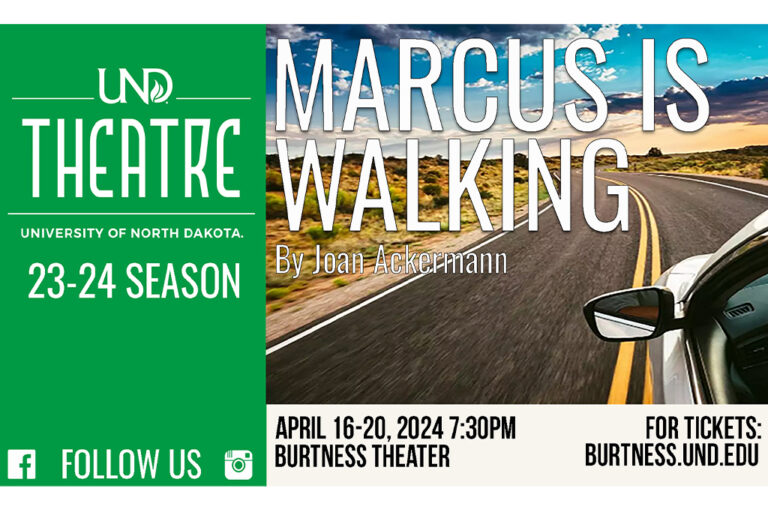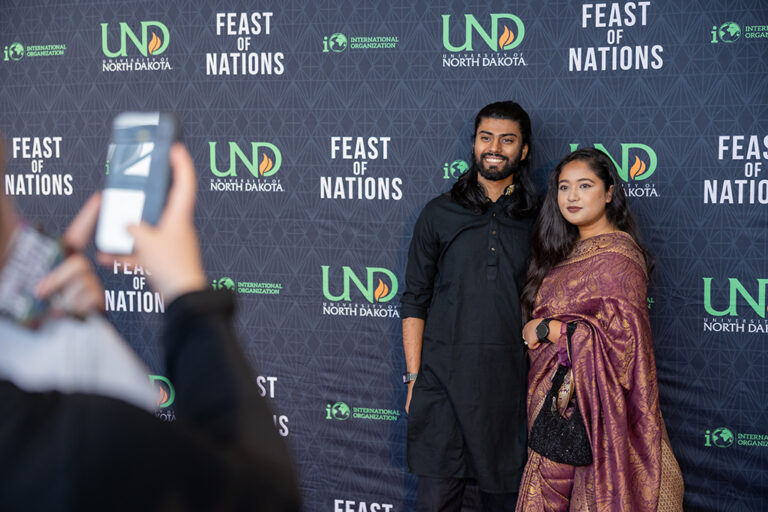Different side of Cheech
Impassioned arts collector — of 1980s cinematic fame — offers more serious take on Chicano culture, perspective
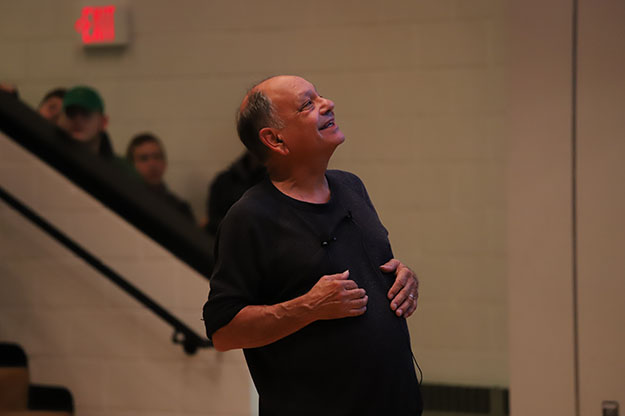
When it came to visiting the University of North Dakota, Cheech Marin knew what he was walking into.
“The first question I get is, ‘Well, how do you like the cold?’” said Marin, probably best known as one half of the comedic duo “Cheech and Chong.” “I lived in Canada for three years, you can’t scare me.”
Marin and his renowned Chicano art collection took center stage in the Hughes Fine Arts Center’s Campbell Recital Hall on Thursday, Nov. 9. His exhibitions of the genre have drawn record-breaking attendance in the past decade.
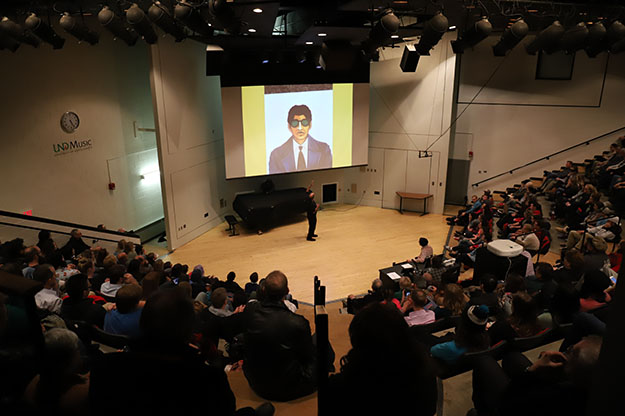
Chicano perspective
Filling the hall beyond capacity, his audience saw a different side of the comedian and pop culture icon. Discussing paintings slide by slide, Marin’s passion for art was apparent—offering historical and cultural insight into a part of America that doesn’t commonly receive as much.
“Chicano art is American art. It’s not separate. It’s just as American as pop art,” he said. “It’s not a style; there are many styles of Chicano art. It’s each artist’s take on the Chicano community. When you put all these pieces of the pie together, you get a 360 degree view.
“Putting the paintings together gives you a taste—what the community smells like, tastes like and looks like.”
Presenting works from various artists and eras, Marin’s lecture was about the Chicano experience. Each piece provided a distinctly Mexican-American perspective, as well as a reflection of Marin’s upbringing in South Central Los Angeles. Paintings crossed a variety of media and methods of expression and contributed to a larger understanding of the community.
And it’s the community aspect that Marin takes the most pride in. In seeking pieces for his collection, he trusts his instincts.
“There’s no image that I look for or things that I look for, other than it has to have some relation to Chicano culture,” Marin said. “It gets you or it doesn’t get you. As a collector … if a painting doesn’t grab you, you can’t fight that off.”
It’s about the topic rather than style, according to Marin.
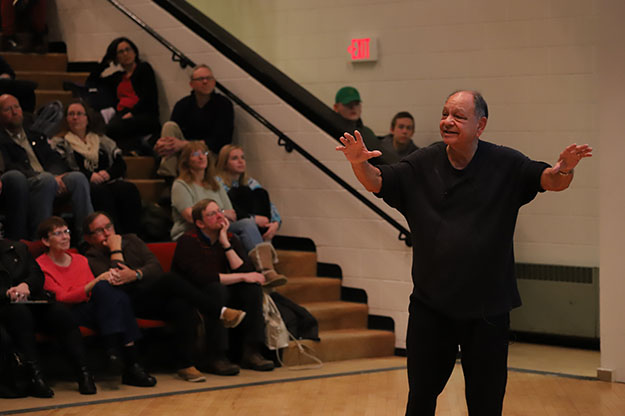
Size doesn’t matter
One of Marin’s biggest inspirations came from seeing Rembrandt’s “The Night Watch” while visiting the Rijksmuseum in Amsterdam. He knew it was big but seeing its enormity in person changed how he understood the impact of art.
“I spent an hour devouring it,” Marin said. “I was floored by it and I said that’s what I want to do when I start showing paintings. I want the biggest paintings I can find, because I want the same emotional impact I had for people seeing the first big demonstration of Chicano art.”
But as Marin’s experiences in the art world grew, he became more enamored by art that doesn’t need an entire wall. In fact, his book, “Chicanitas: Small Paintings from the Cheech Marin Collection,” was, in particular, a focus of his UND presentation. Copies were available to early-arrivers, courtesy of the Colonel Eugene E. Myers Foundations, University Art & Design supporting organizations.
“Small paintings whisper to you,” Marin wrote. “They tell a secret to you and to you only. They imprint upon the soft clay of your memory and you carry them around forever… it’s what’s inside the frame that counts.”
Marin’s visit, part of the UND Department of Art & Design’s Visiting Artists Series, also was made possible by funding from the Myers Foundations.
Marin wrapped up his lecture by stressing the inseparability of culture and artistic expression. The Chicano experience, despite assumptions, he said, is one of deep and complex cultural history.

Artist at heart
While known primarily for his work in the “Cheech and Chong” era, with longtime comedy pal, Tommy Chong, his experiences in arts and entertainment have been much more than that.
“I was an anomaly,” Marin said of his beginnings. “I was that 5-year-old kid that could sing in tune. I made my first record when I was 5. To me, music and art are almost inseparable. Music is an expression of the spirit, art is an expression of the heart.”
His wife, Natasha, is a classical pianist and visited with UND music students during their stay in Grand Forks.
“I’ve been thrilled having Cheech here,” said Wesley Smith, associate professor of ceramics at UND. “In getting to know him, we talked about his time as a potter. I didn’t know Cheech was a ceramicist!
“I’m also very thrilled that he visited with our students. He gave them input and got them pretty excited.”
UND President Mark Kennedy spoke before Marin’s lecture, emphasizing the importance of a liberal arts background. He quoted figures from the U.S. Department of Education that state 60 percent of today’s high schoolers will have a job that hasn’t been invented yet.
“You need to learn to reinvent yourself many times over your lifetime,” Kennedy told the crowd. “Cheech gives us an example of how you can reinvent yourself multiple ways throughout the decades.”


